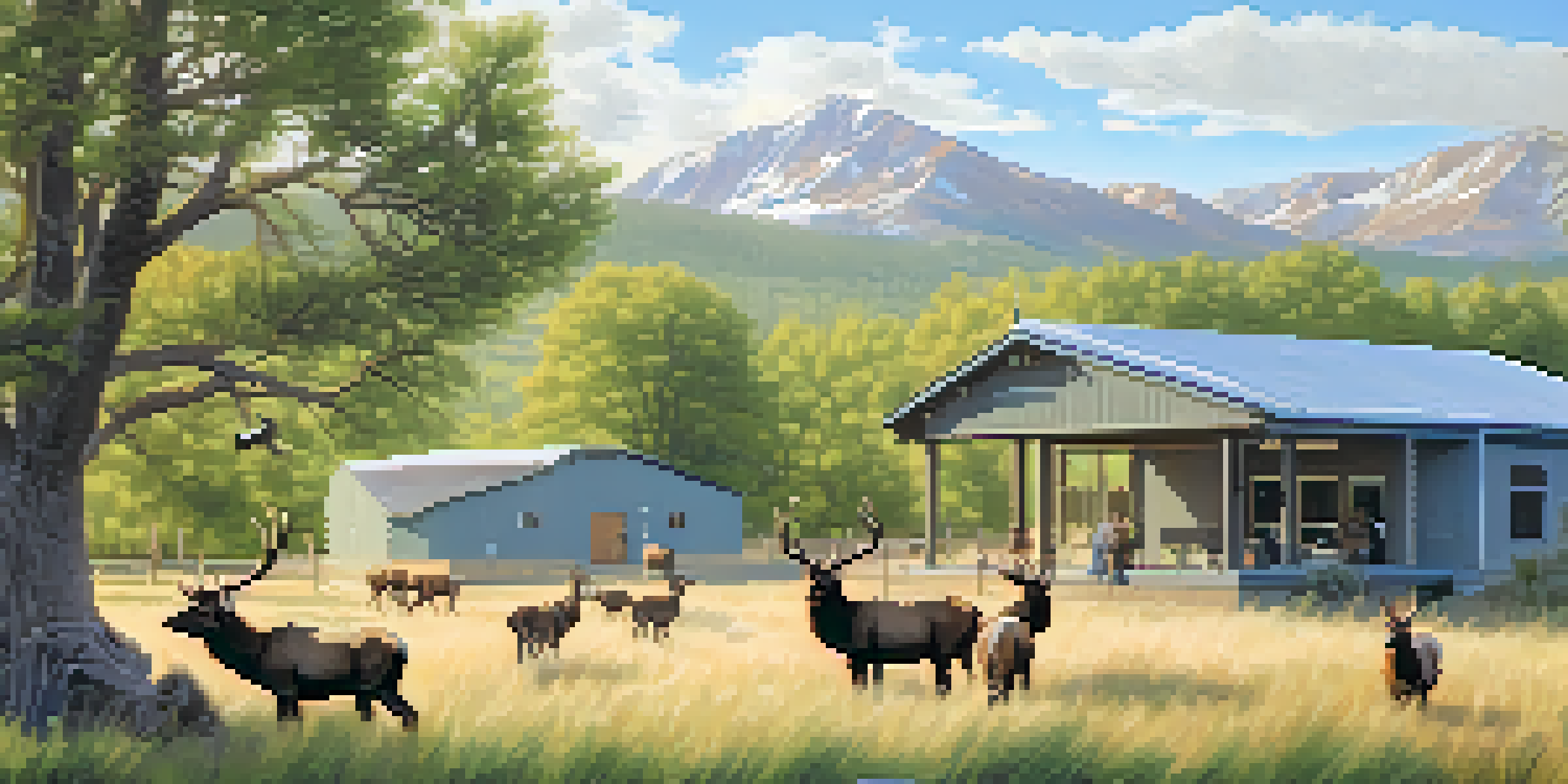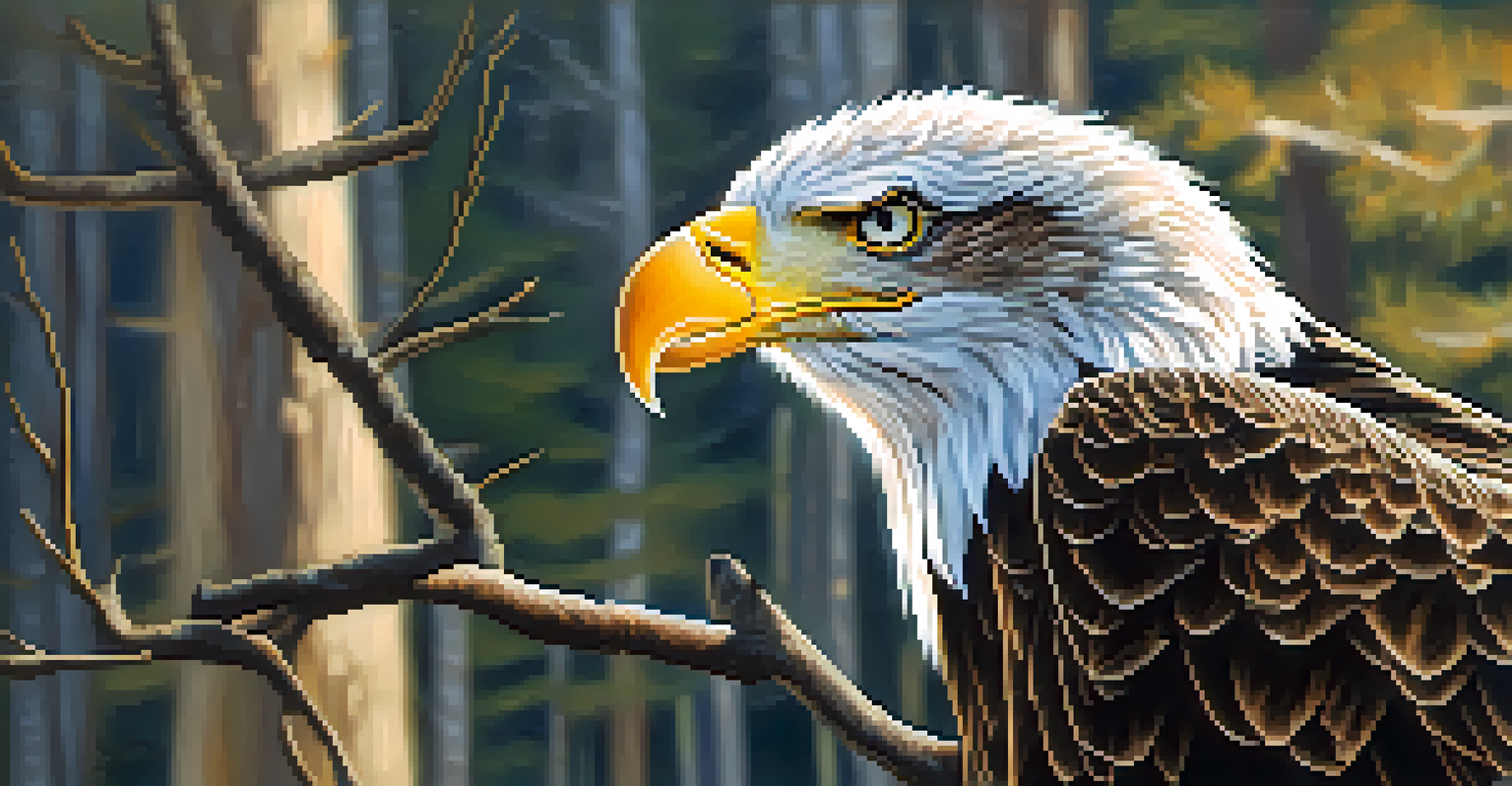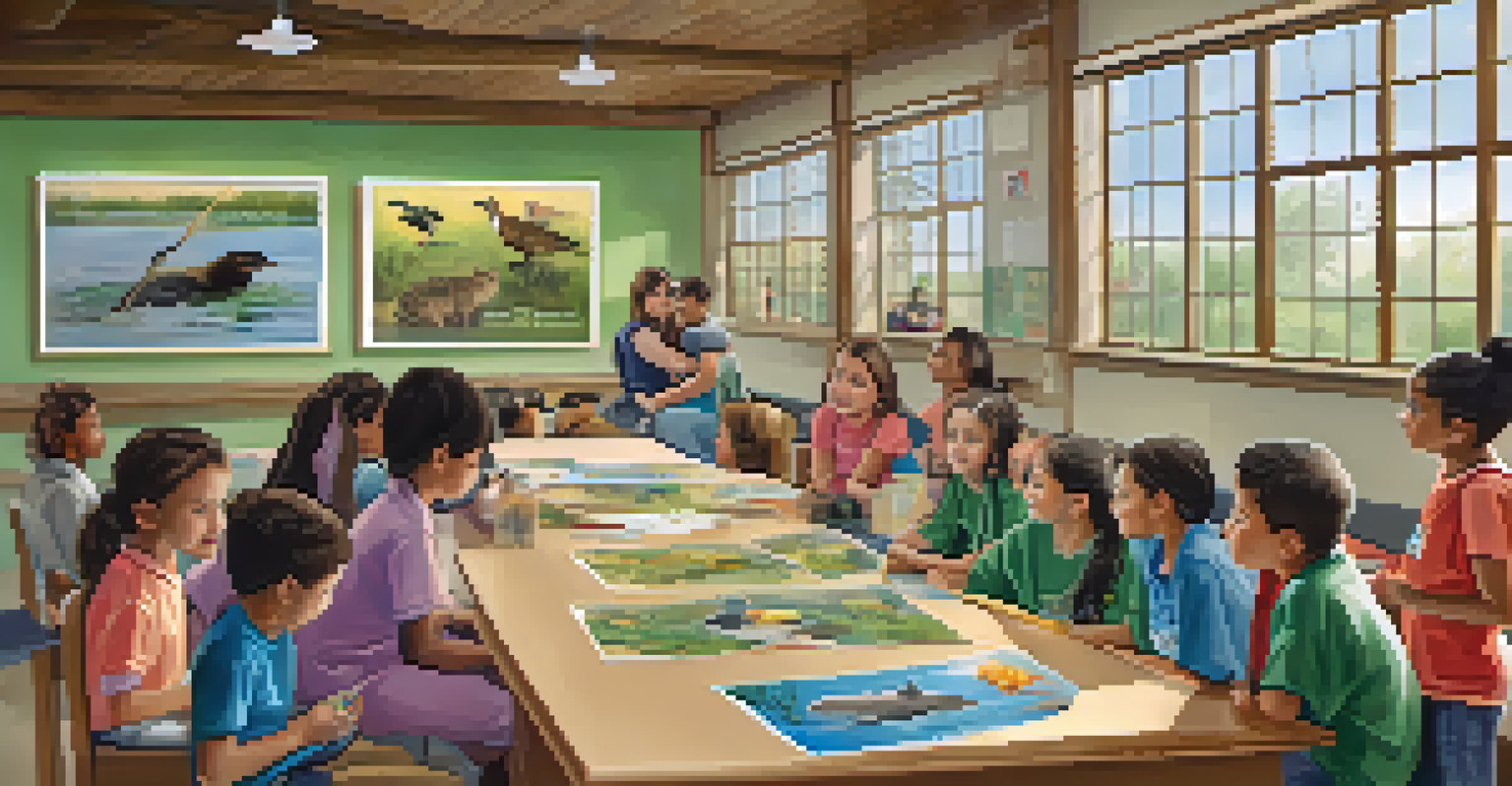The Importance of Wildlife Rehabilitation in Colorado Ecosystems

Understanding Wildlife Rehabilitation and Its Purpose
Wildlife rehabilitation is the process of caring for injured, sick, or orphaned wild animals with the goal of releasing them back into their natural habitats. In Colorado, where diverse ecosystems thrive, this practice is crucial for maintaining ecological balance. Rehabilitation centers provide medical care, nutrition, and a safe space for these animals to recover.
The greatness of a nation and its moral progress can be judged by the way its animals are treated.
These centers often serve as a bridge between wildlife and the community, educating the public about local species and conservation efforts. By fostering a deeper understanding of wildlife, rehabilitation programs help to instill respect and appreciation for nature. This awareness is vital, as it encourages local communities to protect their natural surroundings.
Ultimately, wildlife rehabilitation is about more than just saving individual animals; it's about preserving the complex web of life that supports entire ecosystems. When we rehabilitate wildlife, we contribute to the health and sustainability of Colorado’s environment, ensuring that future generations can enjoy its beauty.
The Role of Colorado's Biodiversity in Rehabilitation Efforts
Colorado is home to a rich array of wildlife, from majestic elk to vibrant songbirds. This biodiversity is not only a treasure for residents and visitors alike but also plays a critical role in the state’s ecosystems. Each species contributes to the balance of its environment, and the loss of any can have cascading effects.

When rehabilitation centers successfully treat and release animals, they help maintain this essential biodiversity. For instance, rehabilitating raptors ensures that these top predators can continue to control rodent populations, which, in turn, supports the health of their habitats. Every animal returned to the wild strengthens the intricate relationships that sustain Colorado’s ecosystems.
Wildlife Rehab Supports Ecosystems
Wildlife rehabilitation helps maintain ecological balance by treating injured or orphaned animals and returning them to their natural habitats.
Moreover, the presence of diverse wildlife enhances the region's ecological resilience, allowing it to adapt to changes like climate fluctuations. By investing in wildlife rehabilitation, we are not only helping individual species but also nurturing the entire ecosystem that relies on their existence.
Common Challenges Faced by Wildlife Rehabilitation Centers
Wildlife rehabilitation is not without its challenges. Centers often struggle with limited funding and resources, making it difficult to provide the level of care that injured animals need. Many facilities rely on donations and volunteers, which can fluctuate and impact their ability to operate effectively.
Wildlife conservation is not just about saving animals; it is about protecting the entire ecosystem that sustains us all.
Additionally, the increasing threats to wildlife, such as habitat loss and climate change, mean that rehabilitation centers are faced with a growing number of cases each year. This influx can overwhelm small organizations, leading to difficult decisions about which animals can be treated. The staff must prioritize cases based on the likelihood of successful recovery and release.
These challenges highlight the importance of community support and awareness. When locals understand the value of rehabilitation efforts, they are more likely to contribute, whether through donations or volunteering. By rallying community support, rehabilitation centers can continue their vital work in preserving Colorado’s wildlife.
Successful Rehabilitation Stories in Colorado
Success stories in wildlife rehabilitation are not only inspiring but also serve as powerful reminders of the impact this work can have. For instance, the successful rehabilitation of a bald eagle, once endangered, showcases the dedication of Colorado’s wildlife rehabilitators. After receiving expert care for a gunshot wound, this majestic bird returned to the skies, symbolizing hope for both wildlife and rehabilitation efforts.
Similarly, many orphaned fawns have been nurtured back to health, demonstrating the compassion and skill of rehabilitation staff. Once these young deer are strong enough, they are released back into their natural habitat, where they can thrive and contribute to their population. Each successful release is a victory that reinforces the value of these programs.
Community Involvement is Essential
Local support through donations and volunteering is vital for rehabilitation centers to continue their crucial work in wildlife conservation.
These stories not only highlight individual animal recovery but also emphasize the broader impact of rehabilitation on ecosystems. Each rehabilitated animal contributes to the biodiversity and ecological balance of Colorado, inspiring further support and engagement from the community.
The Educational Role of Wildlife Rehabilitation Centers
Wildlife rehabilitation centers play a crucial educational role in their communities. Through workshops, school programs, and public outreach, they teach people about local wildlife and the importance of conservation. By sharing knowledge about how to coexist with wildlife, these centers empower individuals to take action for the environment.
For example, many centers offer training on how to respond to injured wildlife or the importance of habitat preservation. This education fosters a sense of responsibility among community members, encouraging them to become active participants in conservation efforts. When people understand the challenges that wildlife face, they are more likely to support initiatives that protect these animals.
Additionally, these centers often partner with local schools, providing hands-on learning experiences that inspire the next generation of wildlife advocates. By engaging young minds, they nurture a lasting appreciation for nature and the importance of biodiversity. This focus on education helps to ensure that wildlife rehabilitation efforts are supported well into the future.
How Individuals Can Support Wildlife Rehabilitation
There are many ways individuals can support wildlife rehabilitation efforts in Colorado. One of the simplest methods is by volunteering time at local rehabilitation centers. Whether it’s helping with animal care, administrative tasks, or outreach programs, every bit of assistance contributes to the center's success.
Another impactful way to help is through donations. Many rehabilitation centers rely on financial support to cover medical supplies, food, and facility upkeep. Even small contributions can make a significant difference, allowing these centers to continue their vital work in caring for injured and orphaned wildlife.
Education Fosters Conservation Awareness
Wildlife rehabilitation centers educate the community about wildlife and conservation, empowering individuals to actively participate in protecting their environment.
Lastly, raising awareness about the importance of wildlife rehabilitation can amplify its impact. Sharing stories on social media, participating in community events, or simply talking about local wildlife can encourage others to get involved. By fostering a community of support, we can ensure that wildlife rehabilitation continues to thrive in Colorado.
The Future of Wildlife Rehabilitation in Colorado
The future of wildlife rehabilitation in Colorado looks promising, but it will require continued dedication and support from the community. As environmental challenges evolve, rehabilitation centers must adapt and innovate to address the needs of local wildlife. This may include expanding facilities, enhancing training for staff, and implementing new technologies in animal care.
Moreover, the increasing awareness of wildlife conservation among the public is a positive trend. With more individuals recognizing the importance of supporting rehabilitation efforts, there is potential for greater community involvement and funding. This collective effort can lead to stronger rehabilitation programs that are better equipped to handle the challenges ahead.

Ultimately, the future of wildlife rehabilitation hinges on our commitment to preserving Colorado's ecosystems. By prioritizing wildlife care and education, we can ensure that future generations will inherit a vibrant and diverse natural world. Together, we can foster a culture of conservation that benefits both wildlife and the environment.